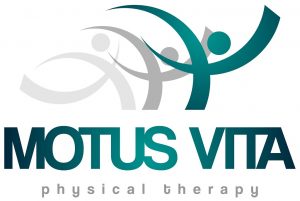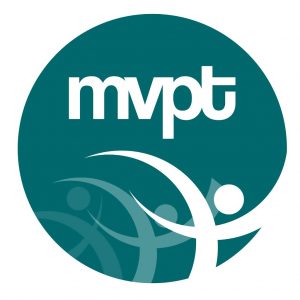Let’s Get Physical!
So your world has been turned upside down and you’ve been driven to start an exercise program at home to help you stay active…this is fantastic!!
Exercise can help you stay active and healthy, reduce boredom, boost your immune system, and decrease stress!
You may have chosen to participate in a guided exercise class online.
You may have chosen to participate in group exercise sessions with your friends on Zoom.
You may have chosen to create your own daily exercise routine.
All of these are awesome options and will keep you active. However, there are some things to remember when exercising, in order to keep you healthy and injury free.
So I am here to share these guidelines and tips with you!
Exercise Tips!
Let’s start with some basic exercise tips:
#1. Start slow
If you are new to a “regular” exercise program, you want to start slow and work your way up to a more vigorous program. This will help you to stick to your new program!
#2. Stick to a schedule
Try to find a time that you will be successful in completing your program. And stick to that time each day.
Some people prefer to exercise in the morning when the house is quiet and everyone is still sleeping. Others prefer to exercise after dinner.
It doesn’t matter when you exercise, as long as you do it routinely! So find a time that works for you and stick with it.
#3. Equipment
There is no need to go online and order fancy equipment, or a ton of weights, or an expensive Elliptical. There are plenty of exercise programs that can be completed with your own body weight or household items! More on this later.
#4. Set Goals
You will be more likely to stick to your new program and make progress if you set goals for yourself. These goals can look like:
– Running 2 miles
– Completing 20 pushups
– Holding a plank for 1 minute
– Running a mile in less than 10 minutes
– Exercising 5x a week
Your goals don’t have to me astronomical, especially in the beginning. Set simple goals. As you reach those goals, make new goals by setting new heights. Exercise programs should look like stepping stones. You can’t run a 1/2 marathon (13.2 miles) on day 1. You have to work toward that (very achievable) goal with smaller stepping stones along the way.
#5 Hold Yourself Accountable
Keep track of your progress with check boxes, charts, calendars, apps, whatever! This will help you see your progress and your improvements. Look at your progress from week to week and remind yourself how far you’ve come and how close you are to your goals.
Types of Exercise and Guidelines!
Now that I’ve discussed some simple exercise tips, let’s talk about some exercise guidelines. These guidelines will help to ensure you stay healthy and injury free while staying active.
First, it’s important to mix it up! Your exercise program should consist of cardio, strength training, and flexibility activities. This can help to prevent boredom within a program, soreness or overuse to muscles, and allows for a more well-rounded program that will target the whole body.
Let’s talk about each type of exercise and some specific guidelines for each:
Cardio
For cardio, this can be as simple as going for a walk with your family, taking a trip around the neighborhood with your dog, going for a bike ride, or taking a 30 minute jog outside as the sun rises.
Cardio doesn’t have to be long or strenuous, just as long as you get a total of 150 minutes by the end of the week.
Pick the activity that excites you the most and do that! Start slow and increase your time or distance every few days.
Example: start with running/walking for 1 mile, continue this for 3 days, then increase your distance to 1.5 miles, continue this for 3 days, then increase to 2 miles, and so on.
Strength Training
It is recommended to participate in strength training exercises, at least 2-3 days each week and should consist of 8-10 exercises that target the entire body. Below is a list of “body part groups” to target:
-arm pushing exercises
-arm pulling exercises
-core exercises
-butt/hip exercises
-leg pushing exercises
-leg pulling exercises
Some people prefer to focus on upper body exercises one day, lower body exercises the next day, and core exercises the next day. This set-up is best for a 5-6 day per week strength training schedule. By creating this type of schedule, it allows for a “rest day” to the other muscles in the body.
Other people prefer to do full body strengthening exercises every other day. This allows all of the muscles worked a “rest day” in between.
Choose the system that works for you!
Other people prefer to do full body strengthening exercises every other day. This allows all of the muscles worked a “rest day” in between.
Choose the system that works for you!
Generally, each exercise should be performed 8-10 reps, for 2-3 sets. To improve muscle endurance: perform more reps in each set. To improve the power of a muscle: perform less reps in each set.
With all strength training it is important to perform each exercise with good technique. When “pushing through” an exercise to get it done, you risk injury. It is ALWAYS better to complete strength training exercises for good quality instead of quantity!
In other words, if you notice your form begins to deteriorate during a set, then you should stop, take a break, then continue with good form. Completing a set or performing an exercise with bad form is a recipe for injury.
It is also important to complete strength training exercises with good control, focusing on using the right muscles. This will help target the muscles you want during each exercise AND will work the muscle more!
If you are using free weights, dumbbells, or resistance bands – start with a low amount of resistance. Once you can complete 3 sets of 10 with good form and without too much difficulty, you can increase the amount of resistance.
Don’t have any of those things, no worries! Below are some exercises you can complete at home that don’t require fancy exercise equipment, use your own body weight for resistance, and work multiple muscles at one time:
-squats
-lunges
-heel raises
-push ups
-planks (forward and side)
-chair push ups/dips
-crab walks
-frog jumps
-stepping up/down on a step
Flexibility
It is a good idea to add a 5 minute stretching routine at the end of each Cardio or Strength Training exercise session. This can help prevent muscle soreness or tightness over the next 24-48 hours.
All stretches should be gentle, NOT painful, and should be held for 20-30 seconds each.
Stretching should NOT include bouncing movements and should NOT be forced. When these things occur, there is a risk of injury to the stabilizing structures of the joints, such as ligaments and tendons.
Now What?!
Now you have some basic knowledge of safe exercise tips and guidelines to help you be successful in your exercise program. So throw on your tennis shoes, grab your headphones, pick your favorite playlist, and get moving!
Remember, the only successful exercise program is one that you will enjoy and one that you will DO. So choose wisely!
Set some goals and pick activities and exercises that you will enjoy, stick with, and will be able to progress and you will achieve each goal!
Looking for more guidance on which exercises, stretches, or activities are best for you? Not sure which activities are safe for you? Unsure of how many to do, how long to exercise, or which days to do what? Confused on how to do certain exercises?
That’s where I come in! Start by checking out my website (Motus Vita Physical Therapy). Here you can learn about me, what I can offer, and how I can help.
Wanna chat more? Give me a call at 813-344-2787 or email me a Jodi@wordpress-1014912-3590851.cloudwaysapps.com
Not ready to chat, but want to keep learning? Join the email list here (MVPT Email List)
Not ready to chat, but want to keep learning? Join the email list here (MVPT Email List)
We can discuss your goals and how I can help you reach them. Let’s work together to create a program designed specifically for you that will help you be successful!
 |
| Photo credit: www.abbeysaxton.com |
Jodi Miller
0

